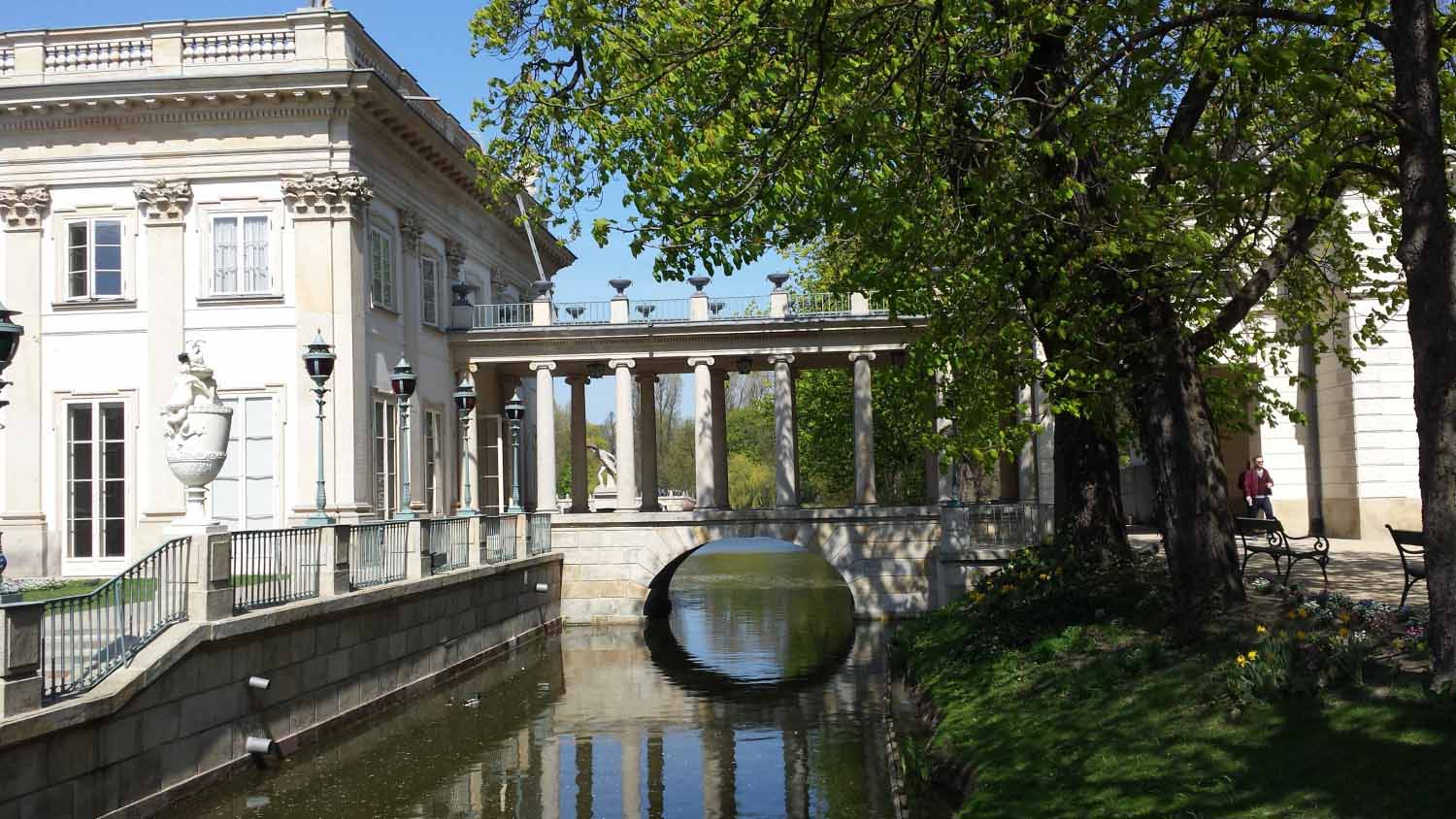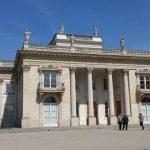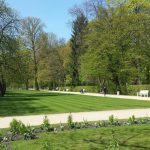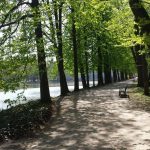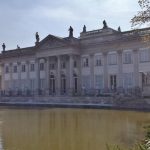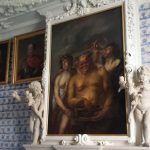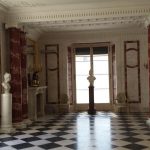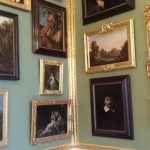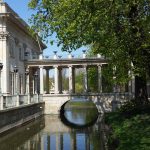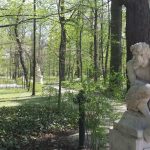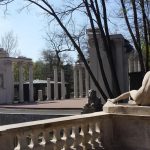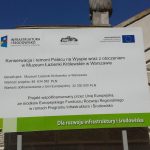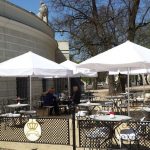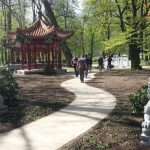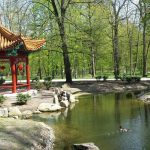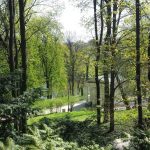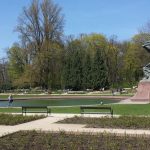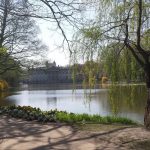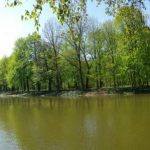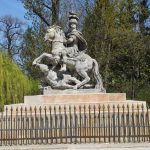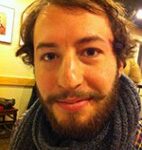The name “Łazienki Park” literally translates into English as “the Bath’s Park” but is often referred to as the Royal Baths Park, since the land once belonged to the last Polish King Stanisław II August and was transformed into a park and gardens under his direction. Historically, the park began as a forest to the south of the Ujazdów Castle (which still exists on the edge of the park today), built in the 13th Century by the Dukes of Masovia as their residence until the construction of the Royal Castle in Warsaw’s historic Old Town a century later. In the following centuries, the castle fell into neglect, serving as a hunting lodge for nobles until the beginning of the 18th Century when the Saxon King August II ordered the building be renovated into a new royal residence.
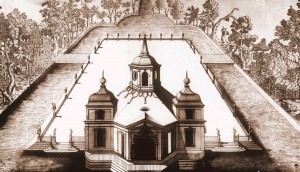
The Ujazdów Castle and grounds were actually only rented by King August II (known as “the Strong”) – they belonged in fact to Count Stanisław Herakliusz Lubomirski. It was Lubomirski who at the end of the 16th Century built the marble baroque Bathhouse (“Łazienka” in Polish) around which are the Łazienki Park and Gardens. In 1766 the last King of Poland Stanisław II August purchased the estate and decided to convert the bathing pavilion into his own private summer residence. Modified and reconstructed in several stages over the two decades from in 1772 until the final partition of Poland and the King’s abdication in 1795, the former baroque Lubomirski Bathhouse was eventually transformed into the classical-style “Palace on the Isle.” Today the Palace is a museum, displaying a royal collection of paintings (mostly from the original private collection of the great patron of the arts, Stanisław II August).
Stanisław II August also converted the forest and former hunting grounds around the Bathhouse into a royal garden in the new English Garden style (which favors a more “natural” landscape in contrast to the rigid symmetry of the French Garden). He even added a Chinese garden, an amphitheater, an Orangery, and numerous other pavilions and sculptures.
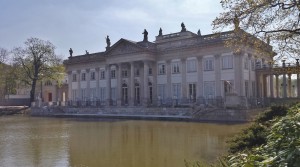
In the following centuries the state of the park gradually deteriorated and the royal art collections were plundered and taken to both Russia (in the Tsarist era) and to Germany (during WWII). During Nazi occupation, the park was closed to Poles and then later during the war, the park and the Palace suffered significant damage. The park could only be faithfully returned to its former 18th Century glory very recently. In fact, the damages to the park during WWII were so significant that the postwar Communist state was unable to complete the restoration and restoration works continue to this day, financed largely by the European Union.
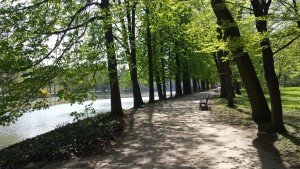
When I visited the park in April, 2015, I noticed a number of signs testifying to the role played by the European Union in renovating the park and Palace. For the renovation of the Palace and its collections, for example, the European Union provided PLN 32,330,000 (about $8.7 million) of the PLN 48,634,582 (about $13.1 million) project or about two-thirds of the funding. The money did seem to be well at work, however. A number of buildings in the park (such as the Myślewicki Palace) were closed for renovation as well as a number of rooms in the Palace on the Isle. Everything that was open appeared to be in perfect condition and newly renovated.
I had been waiting for some time to visit Łazienki Park. The bus that I take downtown to classes from the CC dorm most days (number 108) passes right by the park and its scenic beauty had been tantalizing me for a while. Spring has been slow in coming to Warsaw and I had been waiting for a warm, non-rainy Thursday (since entrance to the museum collections in the park are free on Thursdays). The Thursday I visited did not disappoint. The weather was perfect and I really enjoyed exploring what I could of the 187 acre park, Warsaw’s largest, and decided that it is an excellent place to go running.
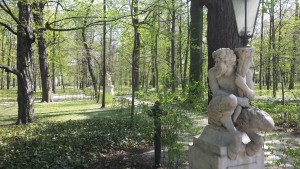
Most of the “royal gardens” are in the more “wild” English style, although there is a smaller section to the north of the Palace on the Isle that more “tamed” and symmetrical. There is also a “Chinese garden” in the royal gardens, complete with its own pond, bridge, and pavilions in an Orientalist style. The park is really enormous, however, and I didn’t see everything. Aside from the royal gardens there is also a “modern garden,” a “romantic garden,” botanical gardens, and even a sports park with soccer goals, basketball hoops, and tennis courts. To the north of the park is the Ujazdów Castle, on the other side of which is the picturesque Ujazdów Park. There was simply too much park and garden for me to explore in one day, so I decided I would most definitely have to come back.
After roaming around the park for a bit, I made my way to the “Palace on the Isle,” located between two reflecting pools at the center of the park. Along the way I passed strutting peacocks and unusually friendly red squirrels that let passersby feed them from their hands. I had never seen a squirrel let a human touch it but maybe red squirrels are just friendlier than the grey American squirrels.
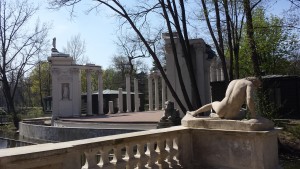
Once I arrived at the Palace, I picked up a free ticket and map from the ticket office and went inside the palace. Unfortunately, there were a number of schoolchildren on fieldtrips to the park that day, so the office was out of audio guides. Guided tours are only organized for groups and can be quite costly, so I just made due with reading the signs in the museum (which are in both Polish and English). There were a number of beautiful paintings (particularly featured seemed to be the Dutch and Flemish schools, there was even a Peter Paul Rubens) but most of the rooms seemed to be closed for renovation. In fact, only five were open, so I would definitely not recommend paying to visit the museum (i.e. visiting any day other than Thursday), until the renovation is complete.
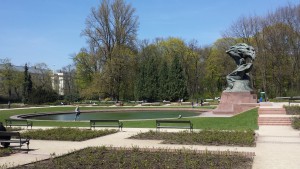
After visiting the museum, I wandered a bit more around the park and happened upon a café, right behind the amphitheater, located on the reflecting pool. I personally didn’t visit the café but took mental note of the nice outdoor terrace, which might be nice for a relaxing on a date after an afternoon in the park. The amphitheater itself is located partially on the reflecting pool and fashioned to look like crumbling Roman ruins. Sitting in the stands provides a nice view of the palace across the water.
In sum, Łazienki Park is an excellent way to spend a relaxing afternoon wandering about the gardens alone or on a date and to enjoy beautiful art (for free on Thursdays)! It is also a great place to run or play sports in the relatively large public sports complex (located in the northeastern corner of the park). I can only recommend it and will definitely be going back.
Łazienki Park and the Palace on the Isle in Warsaw /
Łazienki Królewskie i Pałac na Wyspie w Warszawie
ul. Agrykoli 1, 00-460 Warszawa, Polska
Lazienki-krolewskie.pl
The Gardens are open daily, from dawn until dusk
The museum in the Palace on the Isle is open:
Mon – 11am to 4pm
Tues-Sun – 9am to 6pm
Ticket price to Palace on the Isle: 20 PLN, 15 PLN reduced (for students)
Price includes audio guide
Admission is free on Thursdays


